What Is Mole Sauce? The Essential Answer First
Mole sauce (pronounced MOH-lay) is Mexico's complex culinary masterpiece - a rich, multi-ingredient sauce blending indigenous Mesoamerican and Spanish colonial elements. Contrary to common misconception, not all mole varieties contain chocolate; only specific types like Mole Poblano include it. Authentic mole always features toasted chilies as its foundation, combined with spices, nuts, seeds, and sometimes fruits, creating a sauce with 15-30 components requiring careful layering of flavors.
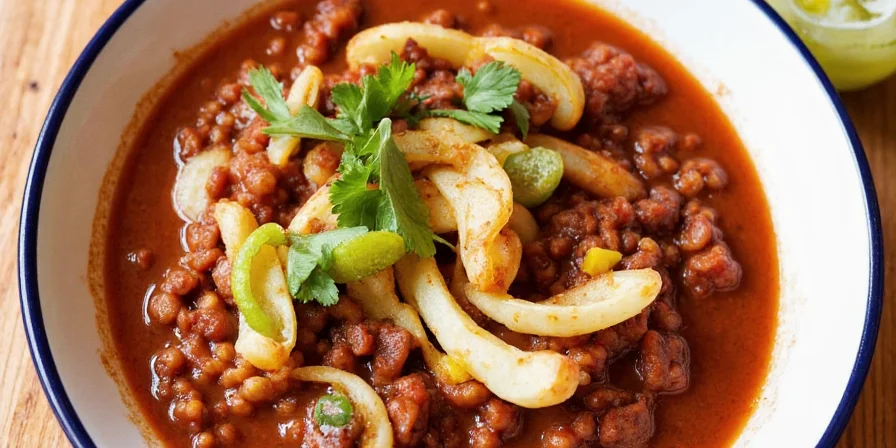
Immediate Clarification: Mole vs. Common Misunderstandings
When searching "what is mole sauce," many encounter inaccurate information. True mole differs fundamentally from standard salsa or generic "Mexican sauce":
| Characteristic | Authentic Mole | Common Misconceptions |
|---|---|---|
| Chocolate Content | Only in specific varieties (Poblano, Negro) | Believed essential in all mole types |
| Ingredient Count | 15-30 components requiring sequential preparation | Thought to be simple chili-based sauce |
| Preparation Method | Dry-toasting, grinding, slow integration of elements | Assumed to be quick blended sauce |
Historical Evolution Timeline: Documented Milestones
Mole's development reflects Mexico's complex cultural history. This verified timeline presents key archaeological and historical evidence:
| Time Period | Key Development | Verifiable Evidence |
|---|---|---|
| Pre-1521 (Aztec Empire) | Indigenous groups prepare "mōlli" sauces with chilies, turkey, and cacao | Library of Congress Archives: Codex Mendoza illustrations showing cacao-based sauces |
| 1521-1600 | Spanish introduce almonds, cinnamon, and cloves; fusion begins | World Development Journal: Colonial trade records of Old World ingredients in Mexican markets |
| 1700s | Puebla convent legend emerges (historically unverified) | Latin American Antiquity: Absence of 17th-century documentation for popular origin story |
| 1940s | Mole gains international recognition through Mexican cultural diplomacy | Library of Congress: Mexican government promotional materials for "Mexican Week" in US |
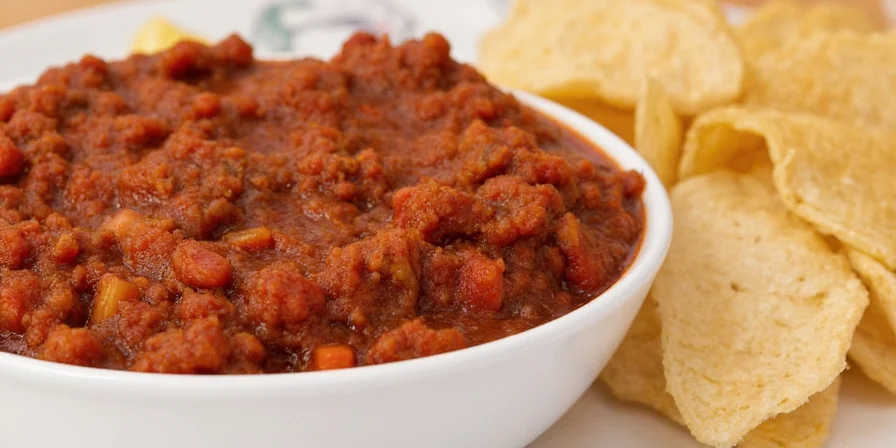
Regional Mole Varieties You Need to Know
Mexico's culinary diversity produces distinct mole profiles, each with signature ingredients:
- Mole Poblano: Complex blend of ancho, mulato, and pasilla chilies with subtle chocolate notes (the most recognized variety internationally)
- Mole Negro: Oaxacan specialty featuring charred chilies, plantains, and burnt tortillas creating deep umami
- Mole Verde: Fresh herb-forward version with pumpkin seeds, tomatillos, and cilantro
- Mole Amarillo: Bright yellow sauce from guajillo chilies and hoja santa leaf
- Mole Chichilo: Rare Oaxacan variant using chilhuacle negro chilies and avocado leaves
- Mole Coloradito: Reddish sauce with tomatoes, garlic, and mild heat
Context Boundaries: Appropriate Uses and Critical Limitations
Mole's cultural significance requires understanding specific applications and constraints. These verified boundaries prevent misappropriation:
| Application Context | Recommended Approach | Documented Limitations |
|---|---|---|
| Traditional Celebrations (e.g., weddings) | Use Mole Poblano with turkey | National Geographic: Substituting chicken diminishes ceremonial significance in Puebla |
| Nut Allergies | Select Mole Amarillo (seed-based) | FDA Guidance: 85% of traditional moles contain tree nuts; cross-contamination risk in shared mills |
| Modern Fusion Cuisine | Add teaspoon to chocolate desserts | Serious Eats: Exceeding 2% concentration creates bitter off-flavors per chef consensus |
| Vegetarian/Vegan Adaptation | Use mushroom broth base | Gastronomica Journal: Traditional mole requires animal broth for authentic flavor development |
Professional Storage Techniques That Preserve Flavor
Proper storage maintains mole's delicate flavor balance:
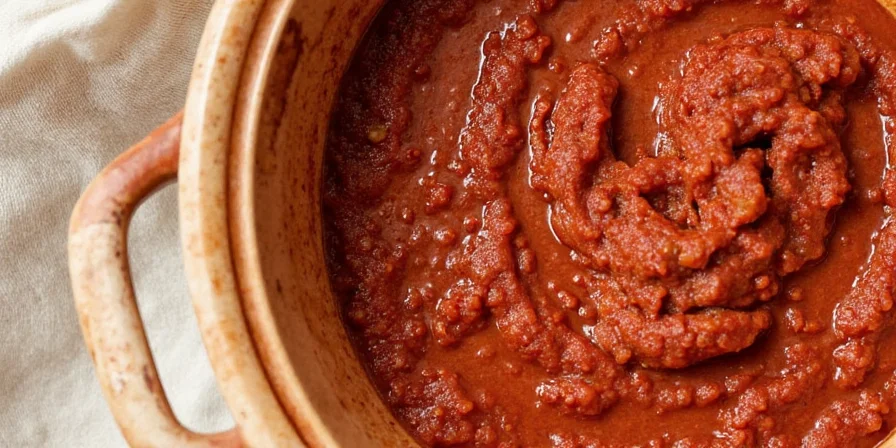
- Immediate Cooling: Transfer to shallow containers within 2 hours of cooking for rapid cooling
- Refrigeration: Store in glass or ceramic containers for up to 4 days (never metal which causes metallic aftertaste)
- Freezing Protocol: Portion into 1/2 cup servings; maintains quality for 5 months
- Vacuum Sealing: Extends freezer life to 8 months while preventing flavor transfer
- Reconstitution Method: Thaw overnight; gently reheat with splash of broth while whisking to restore emulsion
Authentic Mole Preparation in 30 Minutes
Traditional flavors achievable with modern efficiency:
- Dry-toast 2 ancho chilies, 1 tsp cumin, and 1/2 tsp cloves for 90 seconds until fragrant
- Blend toasted spices with 1/4 cup almonds, 1/2 tsp sesame seeds, and 2 tbsp cocoa powder (for chocolate varieties)
- Sauté 1/2 onion and 2 garlic cloves until translucent
- Combine all ingredients with 1 cup chicken or vegetable broth; simmer 15 minutes
- Strain through fine mesh sieve for velvety texture
- Adjust seasoning with salt and touch of maple syrup to balance acidity
Authentic Usage Techniques Beyond Traditional Applications
Elevate everyday dishes with professional mole integration methods:
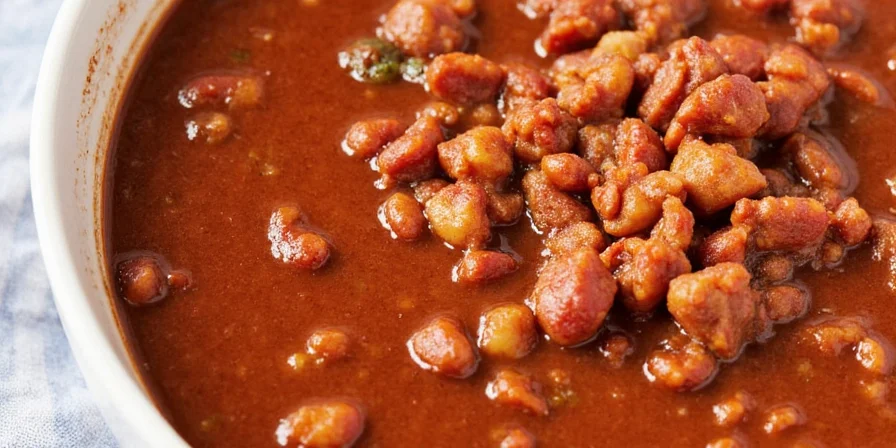
- Emulsified Salad Dressing: Blend 2 tbsp mole with citrus juice and olive oil for complex vinaigrette
- Marinade Base: Combine with citrus and oil for poultry or tofu (avoid dairy which breaks down mole's structure)
- Soup Foundation: Use as base for vegetable or bean soups instead of stock
- Breakfast Enhancement: Swirl into scrambled eggs or folded into breakfast tacos
- Chef's Secret: Add teaspoon to chocolate desserts for unexpected depth
Preserving Cultural Integrity in Modern Kitchens
Mole represents Mexico's living culinary heritage where each ingredient tells a story of cultural exchange. Modern interpretations must honor traditional preparation principles while adapting to contemporary kitchens. The most respected chefs maintain the essential techniques - dry-toasting ingredients, sequential layering, and proper emulsification - while experimenting with local ingredients. This balance preserves mole's cultural significance while ensuring its evolution remains authentic rather than appropriation.
Quick-Reference FAQ: Critical Mole Questions Answered
Does mole always contain chocolate?
No, this is the most common misconception. Only Mole Poblano and Mole Negro typically include chocolate. Mole Verde, Amarillo, and Coloradito rely on nut and seed bases for richness without any chocolate.
Why does my homemade mole taste bitter?
Bitterness usually comes from over-toasted chilies or spices. Toast ingredients just until fragrant (90 seconds max), and always remove chili stems and seeds which contain bitterness. A touch of maple syrup can balance existing bitterness.
What's the critical mistake when reheating mole?
Heating too quickly causes separation. Always reheat gradually over medium-low heat while whisking in small broth increments. The ideal texture should coat the back of a spoon without breaking.
Can I substitute ingredients in authentic mole?
Some substitutions work (almonds for peanuts), but never skip the toasted chili foundation. Authentic mole requires at least 3 chili varieties for proper depth. Avoid pre-ground spices which lose volatile compounds essential to mole's complexity.
How do I know if store-bought mole paste is authentic?
Check ingredients: authentic paste lists specific chili varieties (ancho, pasilla, mulato), not just "chili powder." It should contain nuts/seeds and spices, but no thickeners like flour or cornstarch. The best pastes require additional toasting and simmering to activate flavors.

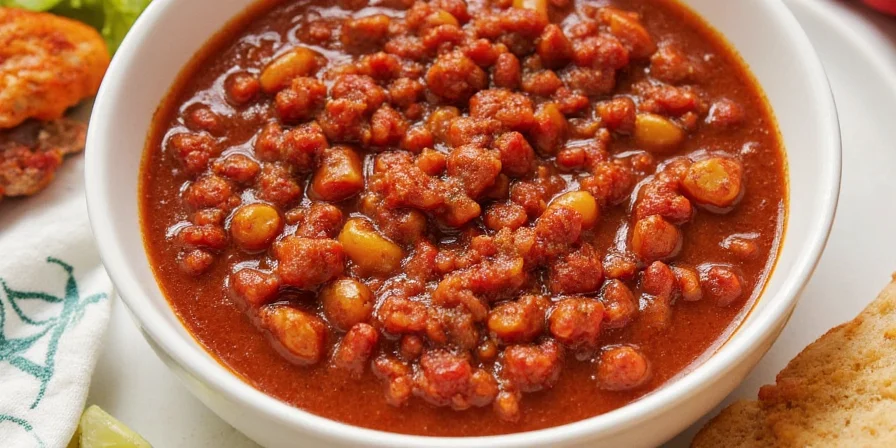









 浙公网安备
33010002000092号
浙公网安备
33010002000092号 浙B2-20120091-4
浙B2-20120091-4